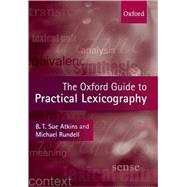
Note: Supplemental materials are not guaranteed with Rental or Used book purchases.
Purchase Benefits
What is included with this book?
| Acknowledgements | p. viii |
| Abbreviations and symbols | p. x |
| Introduction | p. 1 |
| What this book is about | p. 1 |
| What lexicographers do | p. 2 |
| How this book works | p. 5 |
| And finally ... | p. 8 |
| Pre-lexicography | |
| Introduction to Part I | p. 15 |
| Dictionary types and dictionary users | p. 17 |
| The birth of a dictionary | p. 18 |
| Types of dictionary | p. 24 |
| Types of dictionary user | p. 27 |
| Tailoring the entry to the user who needs it | p. 35 |
| Lexicographic evidence | p. 45 |
| What makes a dictionary 'reliable'? | p. 45 |
| Citations | p. 48 |
| Corpora: introductory remarks | p. 53 |
| Corpora: design issues | p. 57 |
| Collecting corpus data | p. 76 |
| Processing and annotating the data | p. 84 |
| Corpus creation: concluding remarks | p. 93 |
| Methods and resources | p. 97 |
| Preliminaries | p. 97 |
| The dictionary-writing process | p. 97 |
| Software | p. 103 |
| The Style Guide | p. 117 |
| Template entries | p. 123 |
| Linguistic theory meets lexicography | p. 130 |
| Preliminaries | p. 130 |
| Sense relationships: similarities | p. 132 |
| Sense relationships: differences | p. 141 |
| Frame semantics | p. 144 |
| Lexicographic relevance | p. 150 |
| Planning the dictionary | p. 160 |
| Preliminaries | p. 160 |
| Types of lexical item | p. 163 |
| The constituent parts of a dictionary | p. 176 |
| Building the headword list | p. 178 |
| Organizing the headword list | p. 190 |
| Types of entry | p. 193 |
| Planning the entry | p. 200 |
| Preliminaries | p. 200 |
| Information in the various entry components | p. 202 |
| Entry structure | p. 246 |
| Analysing the data | |
| Introduction to Part II | p. 261 |
| Building the database (1): word senses | p. 263 |
| Preliminaries | p. 263 |
| Finding word senses: the nature of the task | p. 269 |
| The contribution of linguistic theory | p. 275 |
| Word senses and corpus patterns: context disambiguates | p. 294 |
| Practical strategies for successful WSD | p. 296 |
| Conclusions | p. 309 |
| Building the database (2): the lexical unit | p. 317 |
| The entry | p. 318 |
| Data | p. 322 |
| Using template entries in database building | p. 379 |
| Compiling the entry | |
| Introduction to Part III | p. 383 |
| Building the monolingual entry | p. 385 |
| Preliminaries: resources for entry-building | p. 386 |
| Distributing information: MWEs, run-ons, and senses | p. 394 |
| Systems for handling grammar and labelling | p. 399 |
| Definitions: introduction | p. 405 |
| Definitions: content | p. 413 |
| Definitions: form | p. 431 |
| What makes a good definition? | p. 450 |
| Examples | p. 452 |
| Completing the entry | p. 462 |
| The translation stage | p. 465 |
| Transfer: translating the database | p. 465 |
| Equivalence factors | p. 467 |
| Finding equivalents | p. 473 |
| Putting translations into the database | p. 479 |
| Building the bilingual entry | p. 484 |
| Resources for entry-building | p. 486 |
| Distributing information throughout the entry | p. 490 |
| Writing the entry | p. 499 |
| Bibliography | p. 515 |
| Index | p. 531 |
| Table of Contents provided by Ingram. All Rights Reserved. |
The New copy of this book will include any supplemental materials advertised. Please check the title of the book to determine if it should include any access cards, study guides, lab manuals, CDs, etc.
The Used, Rental and eBook copies of this book are not guaranteed to include any supplemental materials. Typically, only the book itself is included. This is true even if the title states it includes any access cards, study guides, lab manuals, CDs, etc.